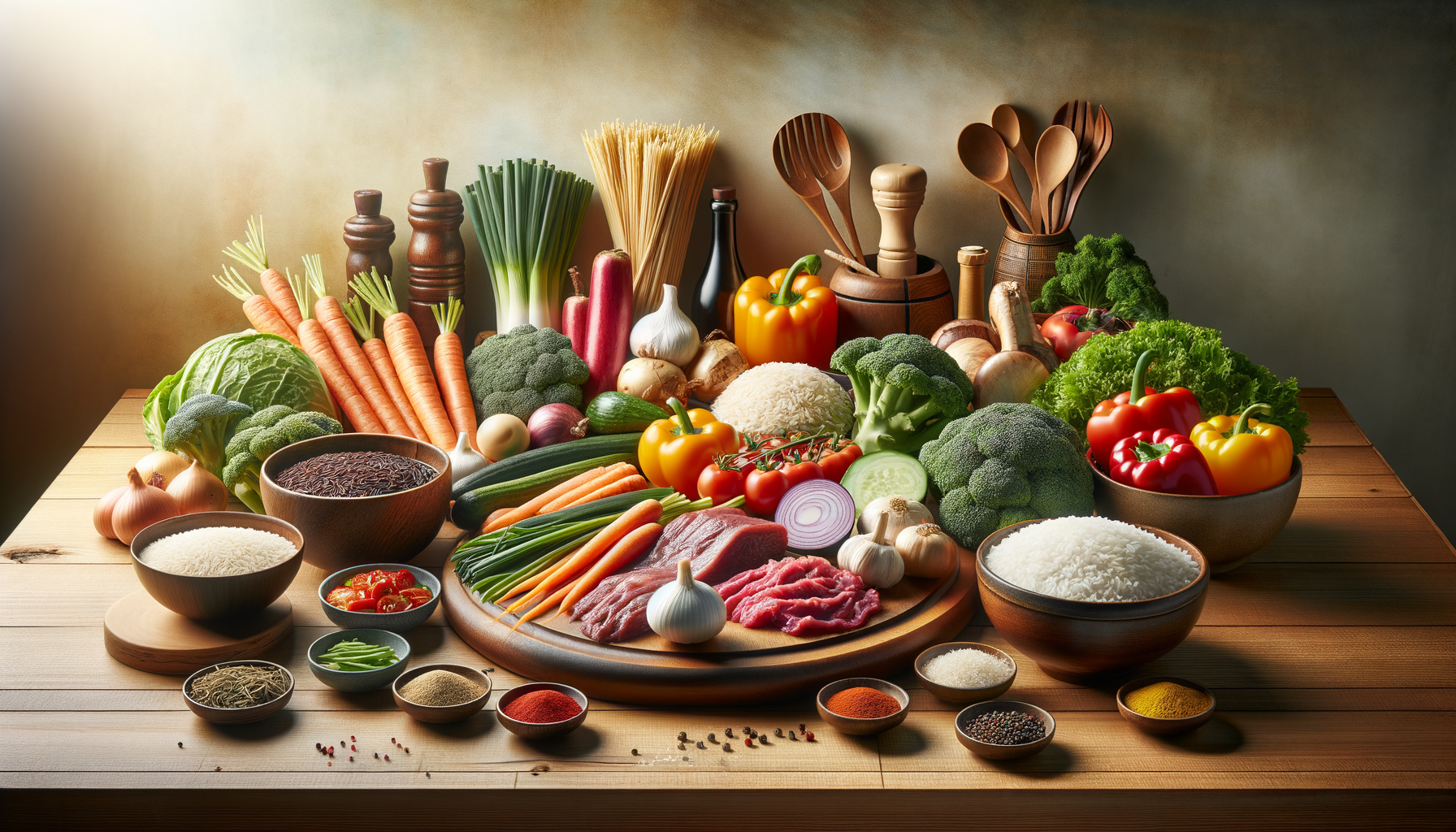
Invalid table data
Have you ever felt that gentle tug of curiosity whenever you hear someone rave about Korean food? Maybe you’ve seen vibrant dishes on TV or caught a whiff of sizzling aromas in restaurants that made you say, “I want to know more!” Well, you’re not alone. Today, we’ll explore the rich world of Korean cooking terms and flavors — all the way from the comforting whispers of steamed rice to the fiery kick of hot pepper paste.
Understanding the Basics
Before diving deeper, picture yourself standing in a Korean kitchen, surrounded by colorful ingredients. Koreans use a wealth of everyday expressions that might seem puzzling at first, yet they’re fun to learn. Bap (밥) stands for rice, but it can also mean “meal” in a broader sense. When someone says, “Let’s have밥 together,” they’re really inviting you to share a meal. It’s a simple way of bonding over good food and conversation.
Here are some other foundational terms and their literal or cultural meanings:
Jjigae (찌개): A hearty stew or casserole that often includes ingredients like tofu, kimchi, or seafood. Think of it as a one-pot wonder that warms both the stomach and the heart.
Banchan (반찬): These are side dishes served in small plates to accompany the main meal. They can be anything from spicy kimchi to stir-fried vegetables.
Kimchi (김치): The famous fermented cabbage or radish dish that’s tangy, spicy, and packed with probiotics.
Gochujang (고추장): A thick, spicy-sweet red pepper paste made from fermented chili peppers, glutinous rice, and soybeans.
When you want to say “Enjoy your meal,” try: “Masissge Deuseyo (맛있게 드세요)”. Not only does it convey politeness, it also captures the friendly spirit of sitting down together to eat.
Cooking Methods That Bring Out the Flavor
Don’t worry if you’ve never stepped into a Korean kitchen. Once you recognize a few key cooking styles, the rest starts falling into place. Here are three popular methods:
Jjim (찜): Refers to steaming or braising. A classic example is galbi-jjim, a luscious beef short rib stew infused with sweet and savory sauces.
Bokkeum (볶음): The process of stir-frying ingredients in oil. Next time you stir-fry some veggies, think of it as bokkeum!
Gui (구이): Grilling meat or fish over an open flame or hot plate. If you’ve seen Korean barbecue places, that’s gui in action.
Deep, comforting broths and sauces are also integral. Many Korean soups rely on Ganjang (간장), the local soy sauce, to add savory depth. Meanwhile, a sprinkle of Gochu-garu (고추가루) — Korean red pepper flakes — delivers an addictive heat. For an extra layer of flavor, drizzle on some sesame oil (참기름) — its nutty fragrance can turn an ordinary dish into something truly special.
Keep a small jar of sesame oil nearby; it can rescue a bland dish in seconds.
A dash of gochugaru brings just enough spice to wake up your taste buds.
Never underestimate the power of ganjang for marinating meat or seasoning stir-fried dishes.
Bringing It All Together
Now, let’s tie it all up in one satisfying moment:
Pick an ingredient you like, such as chicken or tofu.
Decide your method: do you want a slow-cooked jjim or a quick bokkeum?
Gather your essential additions (like gochujang, ganjang, or kimchi) to build layers of flavor.
Cook with care and end with a splash of sesame oil.
Present it with a couple of banchan (like pickled radishes or spinach salad).
When you finally take that first bite, you might exclaim, “Jeongmal Masissseumnida! (정말 맛있습니다),” which means “It’s really delicious!” You’ll feel the comfort of homemade food and the thrill of discovering a new culture right in your own kitchen.
In the end, Korean cooking isn’t just about following recipes. It’s about forging a bond with people through shared meals, stories, and laughter. Even small slips or funny mistakes add a personal touch. So go ahead, treat yourself to new words, flavors, and the delightful world of Korean cuisine. You’ll soon experience how bap goes hand in hand with everything else on the table, creating a tapestry of tastes that transcends borders.